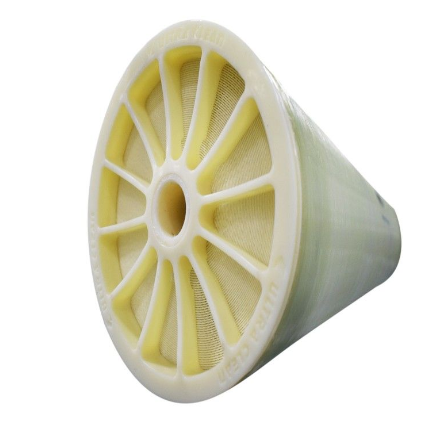How Many Types of Ro Membrane?
- 2 April, 2023
- 5533 Besuche
Reverse osmosis (RO) membranes are a crucial component of RO water filtration systems. They function by filtering out impurities and particles from the water, allowing for a purified output. There are several types of RO membranes available on the market, each with its unique characteristics and advantages.
BWRO Membrane Extra Low Energy Series BW-8040-440XLE
In this article, we will discuss the most common types of RO membranes.
Cellulose Acetate (CA) Membrane
CA membranes were the first membranes developed for RO applications. They are made from a blend of cellulose acetate and plasticizers, which makes them hydrophilic and less susceptible to fouling. However, they have poor resistance to chlorine and high temperatures, which can cause degradation and fouling.
Thin-Film Composite (TFC) Membrane
TFC membranes are the most widely used RO membranes today. They consist of a thin layer of polyamide on top of a polysulfone or polypropylene support layer. TFC membranes have excellent rejection of impurities and are resistant to chlorine, high temperatures, and pH fluctuations. They also have a high flux rate, making them more efficient than other membranes. However, TFC membranes are sensitive to fouling, so they require careful maintenance and cleaning.
Cellulose Triacetate (CTA) Membrane
CTA membranes are similar to CA membranes but have better resistance to chlorine and temperature. They are made from a blend of cellulose triacetate and plasticizers and have a higher flux rate than CA membranes. However, CTA membranes have a lower rejection rate for impurities than TFC membranes.
Chlorine-Tolerant Membrane
Chlorine-tolerant membranes are designed to withstand exposure to chlorine in the water supply. They are typically made from TFC or CTA material but have an additional layer of coating that enhances their resistance to chlorine. These membranes are ideal for use in areas where the water supply is heavily chlorinated.
Low-Energy Membrane
Low-energy membranes are designed to reduce the energy required to operate the RO system. They are typically made from TFC material but have a modified surface layer that reduces the energy needed to push water through the membrane. These membranes are ideal for use in areas where energy costs are high or where the RO system is powered by renewable energy sources.
Nanofiltration Membrane
Nanofiltration membranes are similar to RO membranes but have larger pores, allowing for the selective removal of ions and molecules based on their size and charge. These membranes are ideal for applications that require the removal of specific impurities, such as heavy metals or organic compounds. Nanofiltration membranes are typically made from TFC material but have a modified surface layer that allows for selective removal.
Ultrafiltration Membrane
Ultrafiltration membranes have larger pores than nanofiltration membranes, allowing for the selective removal of particles and molecules based on their size. These membranes are ideal for applications that require the removal of bacteria, viruses, and other microorganisms. Ultrafiltration membranes are typically made from polysulfone or polyethersulfone material.
In conclusion, there are several types of RO membranes available on the market, each with its unique characteristics and advantages. The most widely used membranes are TFC membranes, which have excellent rejection of impurities and a high flux rate. However, other membranes, such as CTA, chlorine-tolerant, low-energy, nanofiltration, and ultrafiltration membranes, have specific applications and advantages. It is essential to choose the right membrane for your RO system based on your water quality requirements and operating conditions.
- Kategorie:
- Unternehmen
- Keine Kommentare



